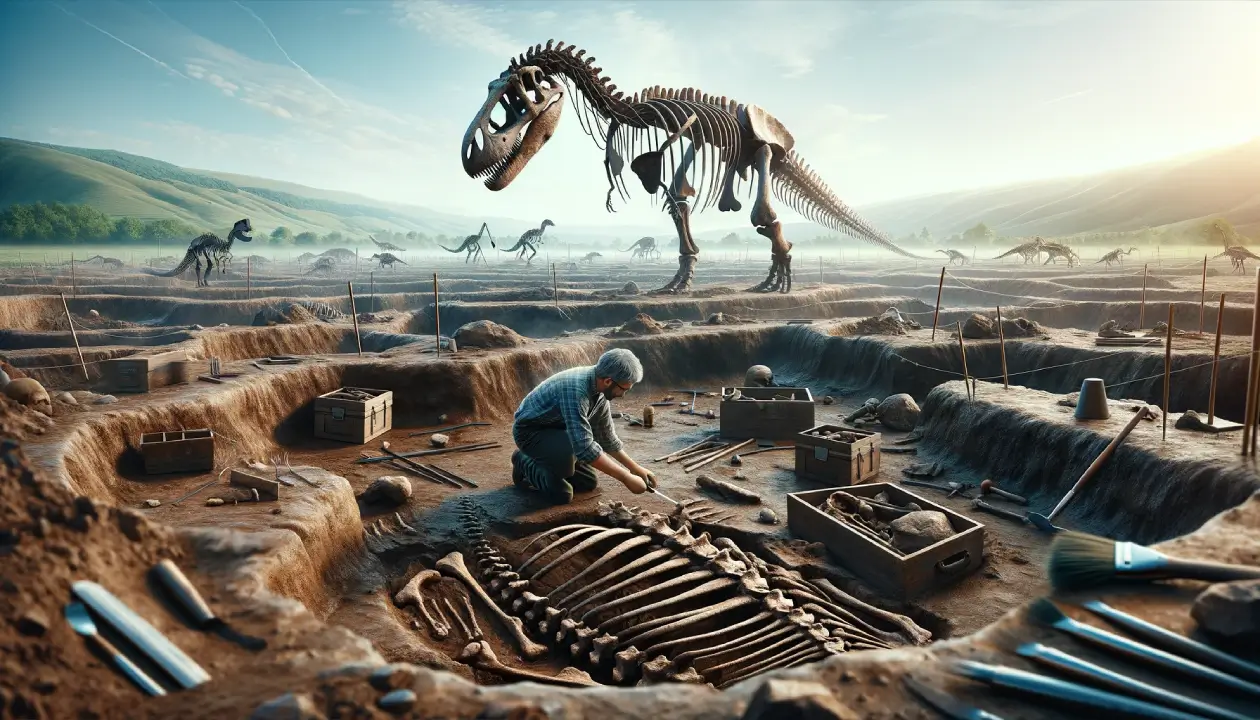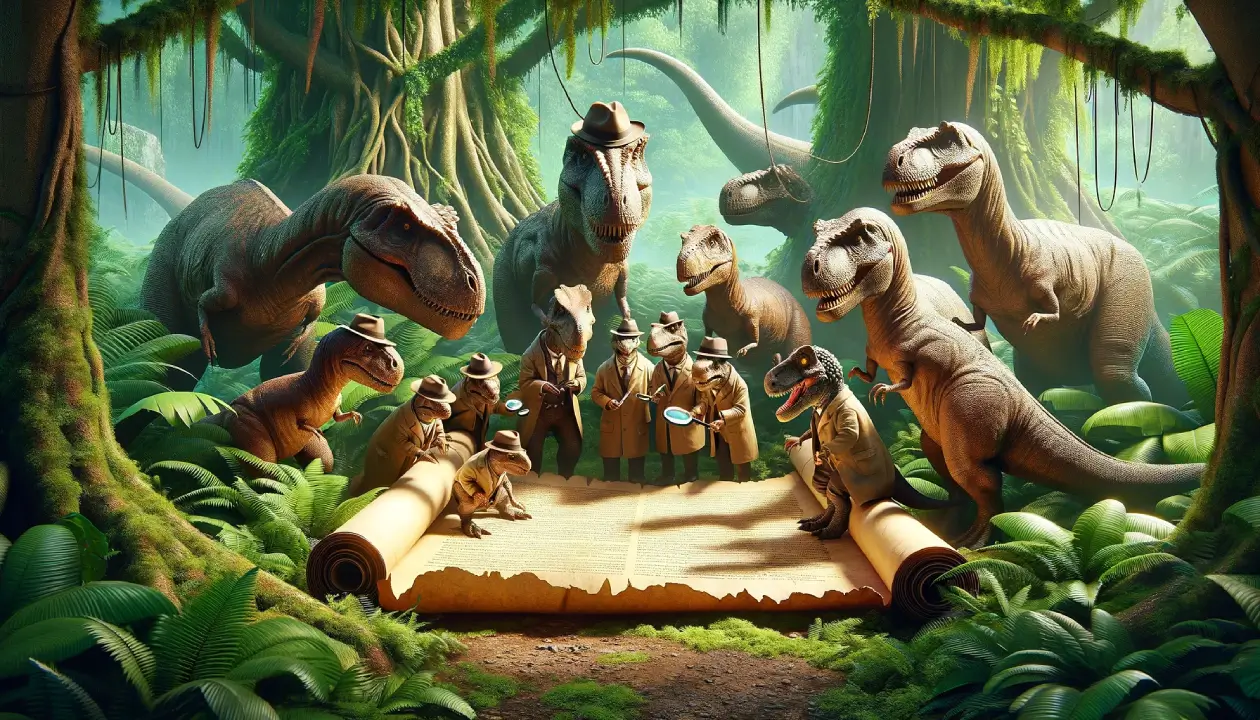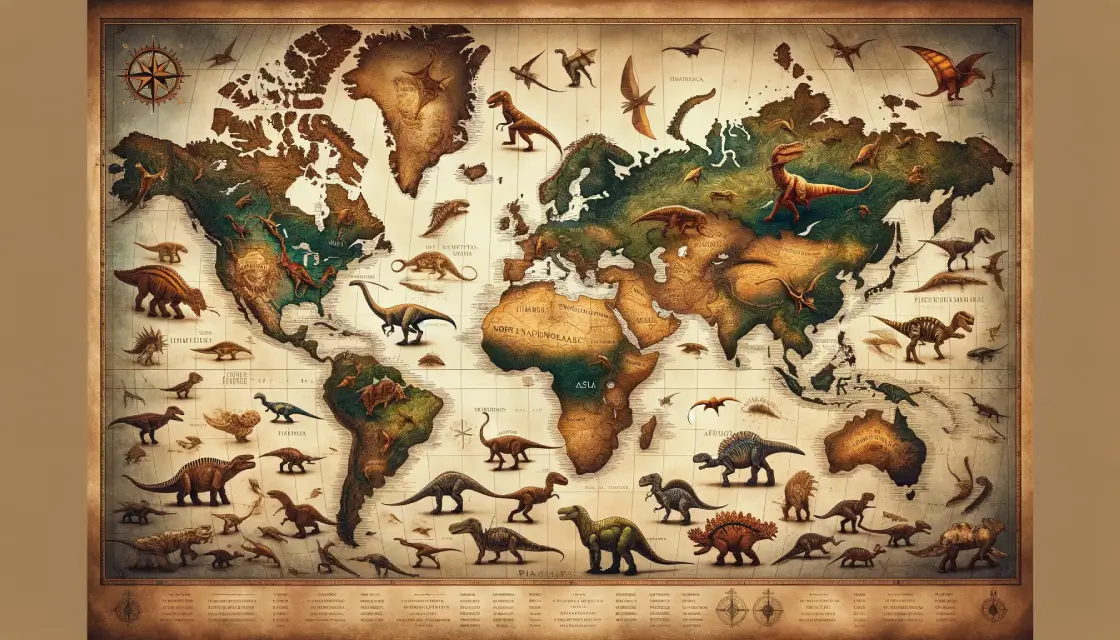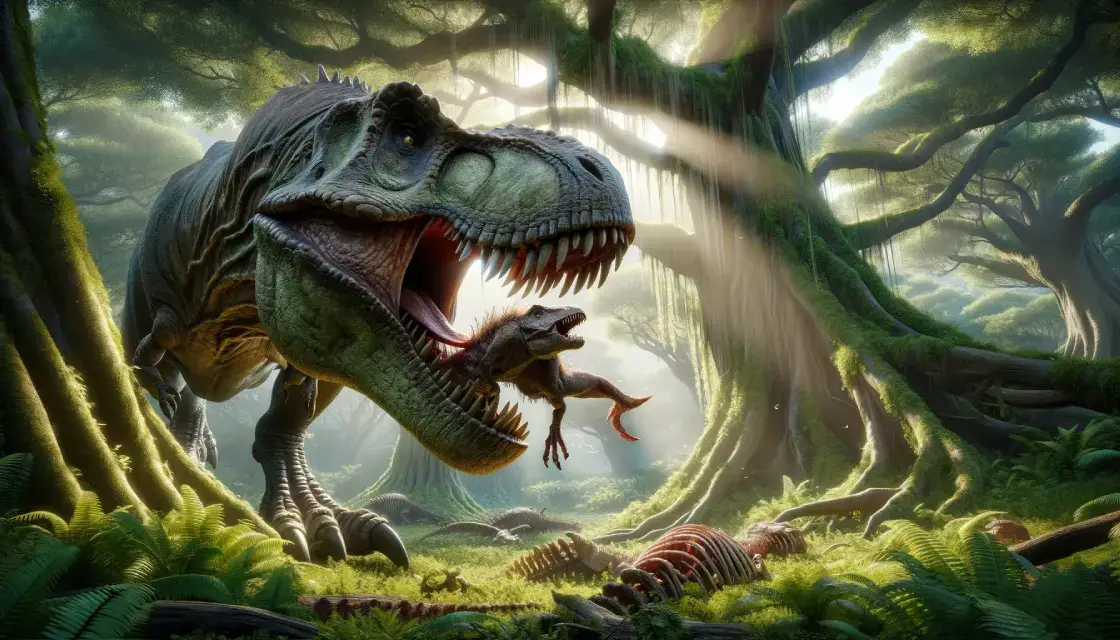The world of dinosaurs has fascinated people for over a century. These prehistoric creatures capture our imagination and make us wonder – how do we know so much about animals that lived millions of years ago?
Paleontologists have pieced together the story of dinosaurs using ingenious methods and surprising sources of evidence. By studying fossilized bones, footprints, and even dung, scientists have uncovered amazing insights into the anatomy, behavior, and evolution of these long-extinct beasts.
| Key Takeaways | Details |
|---|---|
| Fossilized bones and prints provide anatomical clues | Skeletal fossils show structures related to movement, breathing, growth patterns. Tracks indicate gaits, speeds, migratory behavior. |
| Radiometric dating gives geologic context | Methods like radiocarbon dating determine specimen age. Provides timeline for dinosaurs’ existence. |
| Comparative anatomy reveals function and behavior | Comparing dinosaur bones and muscles to modern animals suggests posture, hunting strategies, parenting. |
| New technologies enhance analysis | CT scans, 3D imaging, molecular biology offer detailed anatomical views and insights into soft tissues. |
| Integrating evidence creates complete picture | Combining fossil, behavioral, environmental and time evidence enables thorough reconstruction of dinosaurs and their world. |
Short Answer
Our knowledge of dinosaurs comes primarily from the fossil record. Fossilized bones and prints found in sedimentary rock have allowed scientists to study dinosaur anatomy and infer details about their behavior. Additionally, new technologies like CT scans and robotics provide insight into muscle structure, biomechanics, and locomotion. Comparisons with modern animals shed light on dinosaur environments and ecology. The field of paleontology continues to utilize new methods and evidence to fill gaps in our understanding of dinosaurs.
Fossil Discoveries
Fossilized skeletal remains provide the most direct evidence about dinosaur anatomy. Paleontologists have found dinosaur bones on every continent, embedded in rock layers dating back to the Triassic, Jurassic, and Cretaceous periods when dinosaurs lived. These bones show features like air sacs and growth rings inside the bones which give clues about how dinosaurs breathed, grew, moved, and supported their massive bulk. Amazing finds like almost complete skeletons or bone beds with hundreds of bones from a single dinosaur species are invaluable for understanding anatomy and diversity.
| Dinosaur | Location | What fossils were found |
|---|---|---|
| Tyrannosaurus rex | Montana, USA | Nearly complete skeleton |
| Velociraptor | Mongolia | Multiple skeletons including one locked in combat with a Protoceratops |
| Brachiosaurus | Tanzania | Bones from multiple individuals |
In addition to bones, fossilized footprints from dinosaur tracks provide evidence about how dinosaurs walked and traveled. Tracks show foot anatomy and stride length which helps paleontologists decipher dinosaur gaits and speeds. They often indicate herding or migratory behavior. Important track sites include the Paluxy River in Texas and the La Rioja region in Argentina.
Fossil discoveries continue to shape our understanding of dinosaurs. While new skeletal material is rare, each find adds pieces to the puzzle of what dinosaurs were like when they dominated the earth.
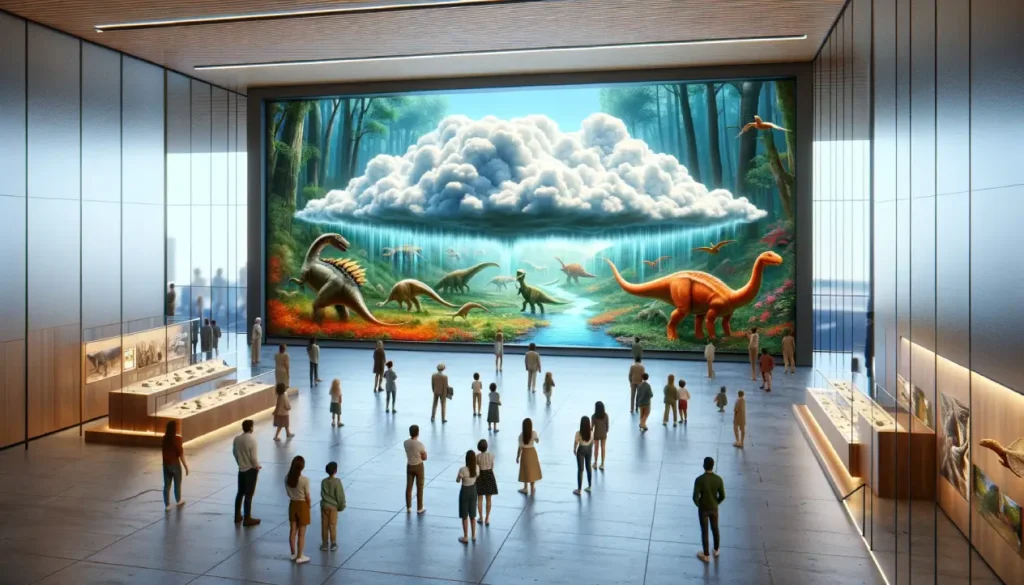
Paleontological Methods
Paleontology utilizes a range of scientific techniques to extract knowledge from dinosaur fossils. Radiometric dating measures the decay of radioactive isotopes in rocks to accurately date fossil specimens. The most common method is radiocarbon dating which can date organic remains up to around 60,000 years old. For older material like dinosaur bones, uranium-lead or potassium-argon dating is used instead. These radiometric dating methods provide the geologic time frame and age of dinosaurs.
To reconstruct dinosaurs, paleontologists first carefully excavate and prepare fossil bones using specialized tools. They analyze microscopic details and structures for clues about muscle attachment sites, ligaments, injuries, and bone growth. Comparing bone shapes helps determine predatory vs prey species and evolutionary relationships. Trace element analysis looks at chemicals in bones related to dinosaur physiology and environment.
In addition to studying bones, paleontologists apply other forensic techniques:
- CT scans – provide interior 3D views of fossils to examine anatomy in incredible detail without damaging specimens.
- Isotope analysis – looks at chemical signatures in teeth that reflect dinosaur diet and ecosystem.
- Even fossilized dung (coprolites) can reveal data on dinosaur digestion and health.
Modern Technology in Dinosaur Research
New technologies have accelerated the rate of dinosaur discoveries and enhanced analysis methods:
- Satellite imagery and aerial photography reveal surface contours that pinpoint promising fossil sites.
- Sophisticated sensors and drone surveys generate detailed dig site maps in remote regions.
- Digital databases like VertNet catalog millions of fossils for research access and data sharing globally.
Advanced 3D imaging and scanning produce high-resolution digital models from fossils. This enables global collaboration, preserves fragile specimens, and creates manipulatable recreations of dinosaurs. Scientists employ CAD software, 3D printing, and even virtual reality to study and reconstruct dinosaur anatomy. Computer simulations model locomotion, biomechanics, and environmental factors like muscle mass distribution and heat flow.
Molecular biology is also unraveling secrets contained in preserved dinosaur proteins and soft tissues:
- Paleoproteomics – identifies ancient proteins recovered from bones.
- Molecular analysis found organic collagen inside dinosaur fossils.
Such biomolecule evidence further completes our view of dinosaur biology.
Comparative Anatomy and Ecology
Comparing dinosaur skeletons and musculature with modern animals gives clues about how they moved and behaved. Sauropods had upright limbs like elephants, suggesting similarly stout posture. The arm bones of Deinonychus resemble those in wings, indicating it flapped its arms.
Studying ecological analogs also reveals potential dinosaur lifestyles:
- Herd structures in sauropods match those of cape buffalo.
- Pack hunting in velociraptors is seen today in wolves.
- Nests with parental care imply bonding behaviors.
- Evidence of migrations and age segregation reflects herd communal nature.
These living models allow paleontologists to hypothesize and test ideas about extinct dinosaur ecology.
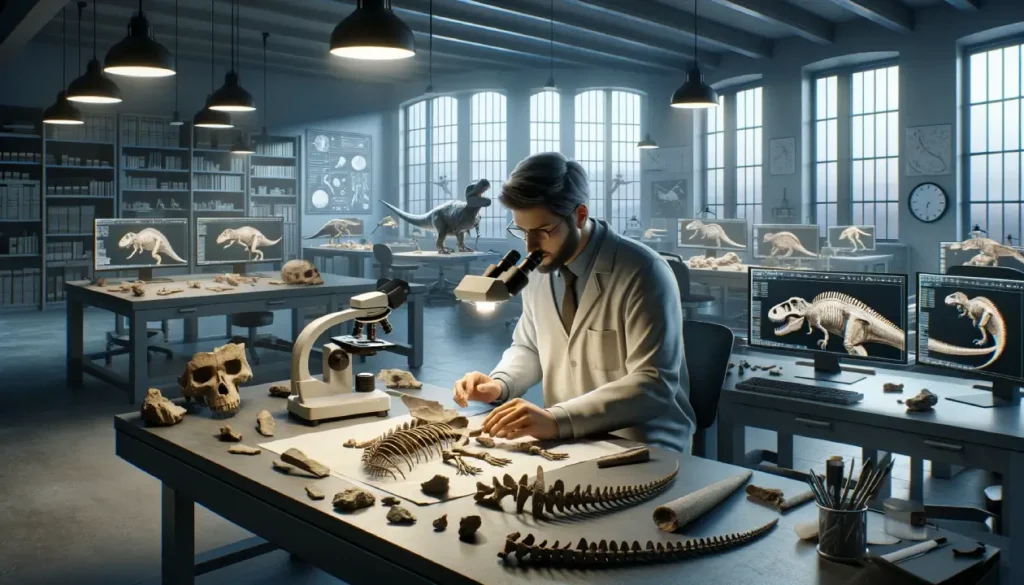
The Role of Geological Studies
Geological context is key for interpreting dinosaur fossils correctly. Sedimentary layers where fossils are found provide age dates using radiometric dating of volcanic ash above/below deposits. Rock types indicate the paleoenvironment – river systems, shorelines, forested areas, etc.
- Fossil sites with mixed species suggest group lives or mass death events vs solitary lifestyles.
- Mineral clues like glacial till or wind-blown sand point to regional climates influencing dinosaur ecosystems.
- Analyzing changing strata demonstrates evolution patterns over time.
- Fossil vegetation and pollen provide insights into dinosaur diets and habitat.
| Geological Evidence | What it reveals |
|---|---|
| Fossil sites with mixed species | Group lives or mass death events |
| Mineral clues like sand or till | Regional climates and ecosystems |
| Changing strata | Patterns of evolution over time |
| Fossil plants and pollen | Dinosaur diets and habitats |
Careful geological analysis allows paleontologists to reconstruct the landscapes where dinosaurs roamed, unlocking details about their lives. Integrating geologic context remains vital for dinosaur studies.
Interesting Facts
- The first dinosaur fossils were discovered in England in the 1820s by Gideon Mantell and William Buckland.
- The largest dinosaur ever found is the Argentinosaurus which reached up to 40 meters long and weighed around 77,000 kilograms.
- Fossilized dung (coprolites) can reveal what dinosaurs ate, if they were sick, and what the environment was like.
- Feathered dinosaurs closely related to Velociraptor suggest modern birds evolved from theropod dinosaurs.
- Dinosaur bones sometimes contain unlaid eggs or embryos inside, providing evidence for nesting behavior.
- Mary Anning, a fossil collector in the 1800s, made huge contributions to early paleontology including finding the first ichthyosaur skeleton.
- The word “dinosaur” means “terrible lizard” and was coined by paleontologist Richard Owen in 1842.
Conclusion
The field of paleontology has assembled the story of dinosaurs using ingenious methods to uncover and analyze fossils, tracks, and other remains.
Radiometric dating provides geologic time context while studies of modern animals allow us to infer dinosaur anatomies, ecologies, and behaviors. Cutting-edge technologies enable advanced scanning and imaging of fossils. Innovative research approaches continue to yield new insights about dinosaurs.
There are still many mysteries left to unravel, showing that our knowledge of dinosaurs is continuously evolving thanks to the dynamic science of paleontology. The famous prehistoric creatures that spark our imaginations still have much more left to teach us.

